Discover History At Singapore Botanic Gardens
The first floor of the SBG Heritage Museum focuses on the early history of the Singapore Botanic Gardens.
Most visitors walking past the small white colonial building behind Botany Centre at the Singapore Botanic Gardens usually give it just a cursory glance as they proceed on their way to view the beautiful exhibits in the Gardens. However, at the end of 2013, Holttum Hall was converted into a museum, the Singapore Botanic Gardens or SBG Heritage Museum. Just across from the Museum, on what was once an empty grass lot, is the eco-friendly CDL Green Gallery.
The Heritage Museum
The first thing you will notice as you enter the Museum is the series of panels detailing the milestones in the Gardens’ over-150 years’ history.
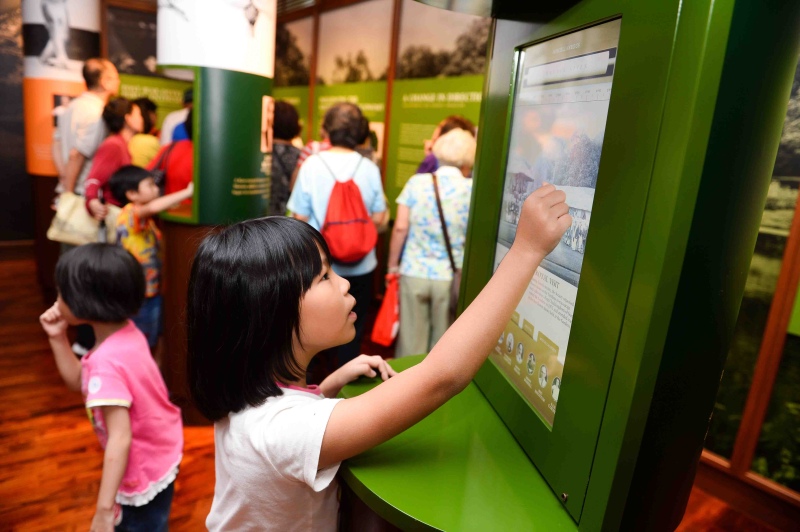
A young visitor checks out an interactive display on the past directors of the Gardens.
The exhibition on the first floor charts the history of the Gardens and introduces its past directors from the colonial period who contributed to its transformation from an ornamental garden into a botanical institution. It also highlights the Gardens’ role in the greening of Singapore from the 1960s onwards.
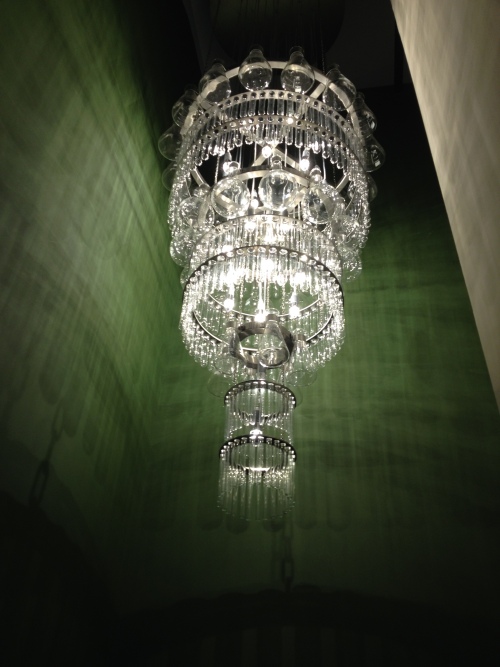
As you climb the stairs to the second floor of the museum, do pause to study the stunning chandelier hanging above. Made of beaker flasks and test tubes, the design was the brainchild of Alan Tan, Senior Deputy Director of the Gardens.
On the second floor, exhibits showcase the Gardens’ role as a botanical institution in the region. Desiccated samples of fruits, flowers or leaves and even the processed product of a crop or tree are displayed in glass cases, a great way to help people to associate the plant to the final product. Old instruments such as microscopes used to study plants are also on display.
One of the displays allows visitors to feel the herringbone cuts on a ‘rubber tree’ pioneered by former director Henry Ridley. It was this technique that allowed the latex from a rubber tree to be tapped without having to fell the tree, thus leading to the rise of the rubber industry.
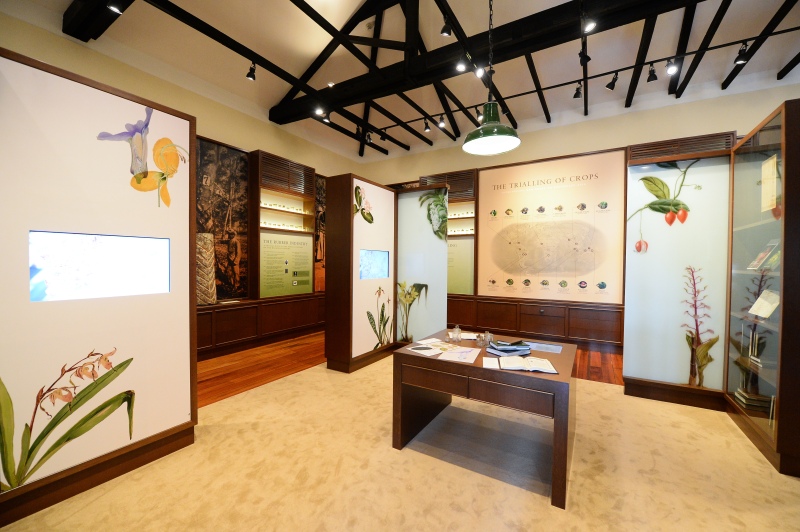
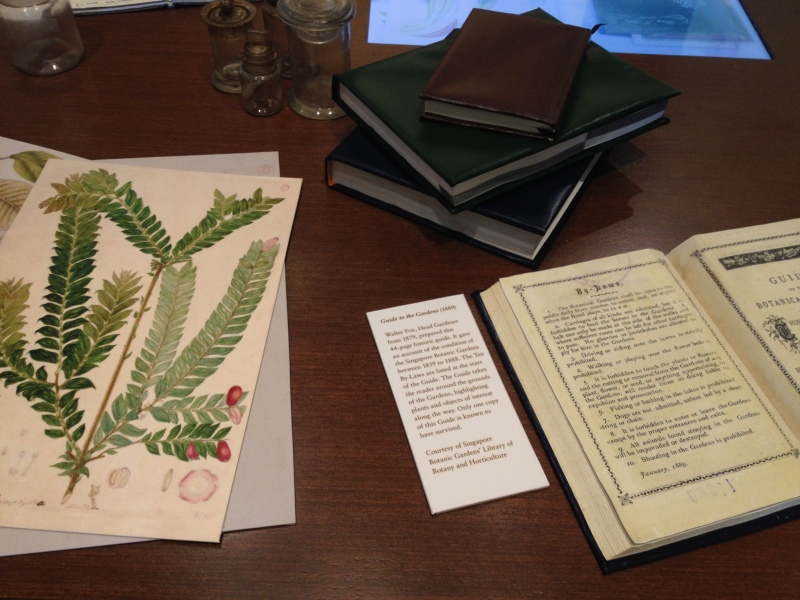
Rare botanical books are displayed in the middle of the room on the second floor while old photographs and botanical drawings line the wall.
An interesting nugget of information is that Holttum Hall was constructed in 1921 to serve as the Director’s office and laboratory. Professor Eric Holttum, which the building was named after, was director of the Gardens from 1925 to 1949. He pioneered the orchid breeding technique that enabled efficient production of healthy seedlings in sterile flasks from a hybrid seed. This technique, which is still in use, was a key factor in the rise of the orchid industry in the region.
The CDL Green Gallery
The eco-friendly CDL Green Gallery is an extension of the Heritage Museum and features different botanical- or greening-related exhibits every six to nine months.
The current exhibition, “Living in a Garden”, commemorates 50 years of greening Singapore. As visitors enter through the sliding door facing the Museum, they will view a short film explaining the importance of greenery in Singapore’s development as a nation.
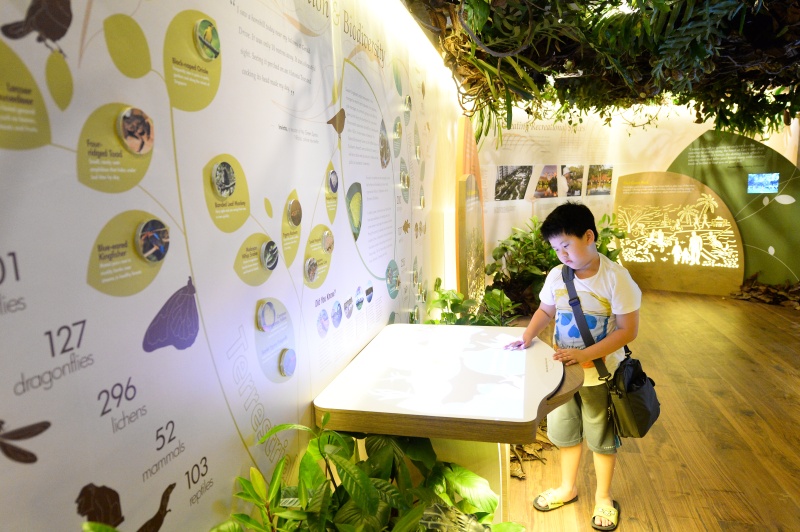
A young visitor using the interactive display to learn more about the biodiversity found in Singapore.
Down the corridor, various exhibits, including interactive displays, share information on the biodiversity found in Singapore, the various parks and recreational spaces available and also the roles of the people involved in selecting, planting and caring for the greenery.
The whole interior of the gallery is beautifully decorated with twinning vines and orchids perched on the ceiling, complete with piped in chirping bird sounds! “Living in a Garden” will continue till 30 June 2014.
Both the Heritage Museum and CDL Green Gallery are opened Monday to Sunday from 9am to 6pm.
For more information, please visit the Singapore Botanic Gardens website.
Singapore’s first zero energy green gallery
Developed by CDL, the eco-friendly CDL Green Gallery is an extension of the Heritage Museum. It has solar photovoltaic (PV) cladded roof panels that will harvest all the energy required for the building’s operations. The exterior wall is made of Hempcrete, which is a mixture of hemp core (shiv), lime binders, and water. The material is ideal for Singapore’s humid climate, highly durable, and naturally pest, mould, mildew and fire resistant. Other eco-friendly features of the gallery include:
- Green Walls (above photo) – the East and West façade will be cladded with butterfly-attracting plant species to encourage biodiversity
- Green Roof – drought resistant plant species are planted to lower the Urban Heat Island effect around the building
- Energy efficient interior fittings – the building is fitted with LED lights and energy efficient air-conditioning systems The Building and Construction Authority (BCA) has accorded this Gallery with the BCA Green Mark Platinum status – the highest tier for green buildings in Singapore.
Have views or comments on this article? Let us know via this form. If you would like to give us feedback on any other areas relating to our parks and gardens, please submit via https://www.nparks.gov.sg/feedback



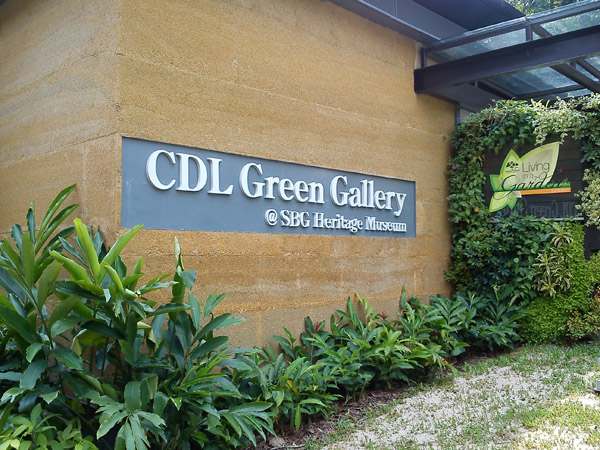
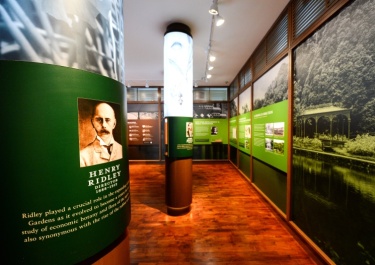
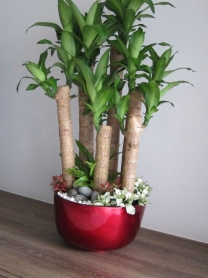
Mdm Chen Xue Mei 1/20/2014 2:23:02 PM